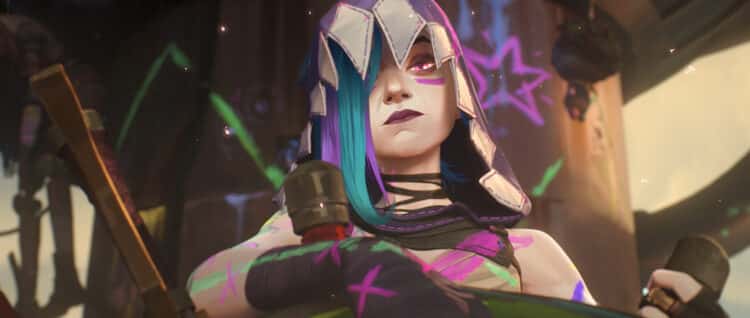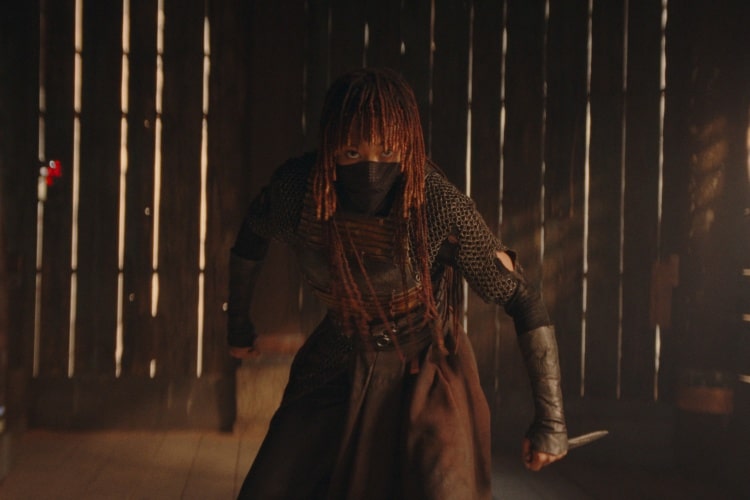Woody, Cast Do Broadway Right
Main Cast: John Cusack, Jennifer Tilly, Dianne Wiest, Jack Warden
Director: Woody Allen
Bullets Over Broadway, simply put, is my favorite Woody Allen film.
Yes, Sleeper is zanier, Crimes and Misdemeanors is deeper, and Annie Hall is cuter. But if I were stuck on a desert island and could only take one Allen opus with me, Bullets Over Broadway would be my pick.
Bright lights, big city
The time: the Roaring ’20s. The place: New York City, home to gangsters, starlets, and starving artists. David Shayne (John Cusack) is one of the latter, a serious young man who writes serious plays, lives in an attic with his supportive girlfriend (Mary-Louise Parker), and engages in animated discussions about art, life, and Karl Marx with equally unsuccessful friends like Sheldon Flender (Rob Reiner).
Then one day, the Great White Way beckons – in the form of mob honcho Nick Valenti (Joe Viterelli), who wants to sponsor a production of Shayne’s latest work. The catch? Valenti’s significant other, chorus line dancer Olive Neal (Jennifer Tilly), has to get a major part.
To enforce this requirement, Valenti assigns one of his goons, Cheech (Chazz Palmintieri), to accompany Olive to rehearsals. This complicates an already difficult situation for writer-director Shayne, who has to guide his temperamental cast – headed by the grandly theatrical Helen Sinclair (Dianne Wiest) – through his well-meaning but, as it turns out, unwieldy and unworkable script.
There are no such problems with the Oscar-nominated screenplay for Bullets Over Broadway, which was co-written by Allen and Douglas McGrath. The action moves swiftly from one scene to another, with a generous helping of snappy one-liners. (“Life is not perfect. Plus, it is short!” is my current favorite.)
And though Bullets Over Broadway” does cover a play from first reading to Broadway opening, this is not a typical will-the-show-be-ready-when-the-curtain-goes-up story. The rehearsal process is ostensibly the main plot, but it’s really a convenient way to present a bunch of subplots (which I will not spoil, no matter how much I want to). These little scenes of backstage intrigue – the interactions of the principal players – are the meat of the movie. Which brings me to my next point…
“She ruins everything she’s in. She ruins things she’s not even in!” (Cheech)
While this is true for Olive, it’s not the case for any of the actors in Bullets Over Broadway. There isn’t a weak link anywhere in this cast (important with this story), and three members in particular stand out:
– Wiest, who’s a charismatic, colorful and supremely seductive leading lady. Her Helen Sinclair – no longer one of the big names on Broadway – can still dazzle a theatre audience (or a naive playwright) at will.
– Tilly, she of the little-girl voice and great comic instincts. It must have been difficult to play someone so untalented and oblivious, but she pulls it off with style.
– Palmintieri, as a career hood who surprises even himself with a new talent. Chazz should do comedy more often; he’s done a fine job of making Cheech’s tough guy into a sympathetic (if not completely likeable) character.
All three were nominated for Supporting Actor Oscars, with Wiest winning.
I also enjoyed watching Cusack as the Allen stand-in (thank heaven, he does not do an Allen imitation), Tracy Ullman as the perky ingenue, and Jim Broadbent as the anxious leading man whose appetite increases as opening night approaches.
One cut, two cuts, three cuts…no cuts?
It took me three viewings of Bullets Over Broadway before I realized that something unusual was happening with the camera. The scene that clued me in takes place at the establishment where Olive dances; Nick comes backstage to see her, and they end up arguing about the state of her (nonexistent) acting career.
From beginning to end of their spat, the camera does not move. At all. Olive walks around the room, Nick follows her, a dancer eating Chinese food crosses directly in front of the camera, blocking them from view – and the camera doesn’t budge an inch. If there were any cuts, I couldn’t tell.
I saw Bullets Over Broadway again a few weeks ago just to watch the camera work, and found some more interesting things:
– Most scenes were filmed in one continuous shot. No scene, it seems, uses more than a handful of cuts.
– In some scenes, the camera starts filming before the characters even enter the frame. It’s as if the characters are passing by, and the camera just happens to be there to catch their conversation.
– Even in scenes where the camera follows the characters, it lets trucks, other people, etc. block them from view.
– In other scenes where you’d think a zoom would be called for, the camera keeps its distance.
The end result: unlike movies that are cut like music videos, Bullets Over Broadway takes a low-key approach, camera-wise, and keeps the focus firmly where it belongs – the acting and the story. I’m not sure if Allen or cinematographer Carlo di Palma should take the credit for this…but I’ll happily sing both their praises any day of the week.
Verdict
“Bullets” gets a five out of five from me. Though it helps if you have at least some familiarity with the stage, it doesn’t hurt if you don’t. This movie has definitely earned a spot on my top ten comedies list; some day, I’ll figure out the other nine.






Leave a Reply